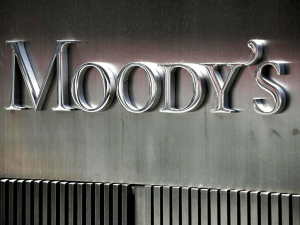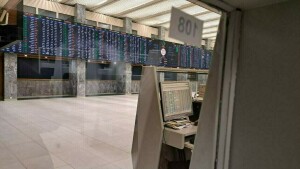The risk of Britain crashing out of the European Union without a trade agreement has dragged sterling to its lowest in almost a year this week, and the prospect of a 'no deal' Brexit has also infected the UK government bond market in recent months.
One of the clearest financial market signals of future economic activity and growth is the 'yield curve' of government bonds, essentially the difference between short- and long-term market borrowing costs stretching years and even decades into the future.
In a healthy, growing economy the further along the curve into the future you go, the higher yields will be to account for growth and higher inflation over time. When that yield curve flattens, however, it signals concern about future activity. It also tends to crimp lending by reducing banks' interest margins.
When the curve turns negative, or "inverts", it frequently presages full-blown recession. For the UK in recent months, the gilt yield curve has flattened each time market there has been a rise in concern about a "no-deal" Brexit or tensions between Brussels and London.
Bond investors, it would seem, agree with the International Monetary Fund, the Bank of England and some of the world's biggest banks and asset management firms that a "hard Brexit" will damage the economy's health. This week, for example, the gap between two- and 10-year yields on Gilts, as British government bonds are known, narrowed to 52 basis points from 58 points as UK trade minister Liam Fox spoke of up to a 60 percent chance of a no-deal Brexit .
"The Gilt curve is reflecting the mess that the UK economy will be in both during the Brexit process and afterwards," said Mizuho's head of rates strategy Peter Chatwell. The 2-10 year Gilt curve has flattened from 78 basis points in early 2018 and from 95 points one year ago. And the way the flattening trend has progressed suggests the UK's prospects are increasingly being viewed through the prism of what kind of Brexit it can negotiate.
For example, when British foreign minister Boris Johnson and the minister in charge of Brexit, David Davis, resigned in early July, clouding the outlook for London's negotiations with Brussels, the 2-10 curve flattened nine points in one week to 46 bps. Apart from a brief period after the Brexit vote in June 2016, that was the flattest it had been since the 2008 financial crisis. The curve then steepened again, until Fox spoke this week.
To be sure, gilt movements are also part of a global phenomenon of flattening curves, a process led by the United States where the Federal Reserve has been steadily raising official interest rates. The US 2-10 curve has flattened to around 30 bps and looks increasingly likely to invert. Curve inversion is a situation where short-dated borrowing costs are higher than longer-dated ones. Over the past 40 years, every instance of inversion of the US Treasury curve has led to recession.
British records go back less far, but two out of the three times the Gilt curve inverted in the past two decades, the UK has fallen into recession. The third time witnessed a sharp slowdown in growth, although not a contraction. Chatwell of Mizuho reckons the UK curve is more likely to invert than its US equivalent, even though the United States is much further down the economic and monetary policy cycle, having hiked rates seven times in the last five years to 1.75-2 percent.
The BOE's recent move to 0.75 percent was only its second rate hike in a decade. Because of this, many believe Brexit, by clouding the UK's economic future, is a crucial influence on the curve. The BOE admitted as much after its meeting, flagging only one potential interest rate rise in each of the coming two years. Andrey Kuznetsov, a fund manager at the $392 billion Hermes Investment Management, sees the Gilt curve flattening further, noting that while slowly rising interest rates nudge up two-year yields, "rising uncertainty on the political front, both in the UK and abroad, is supporting demand for the 10-year point." "Putting the two together, flattening will continue," he said.
BR100
15,186
Increased By
82.6 (0.55%)
BR30
42,842
Increased By
223 (0.52%)
KSE100
149,361
Increased By
1164.3 (0.79%)
KSE30
45,552
Increased By
281.7 (0.62%)





















Comments
Comments are closed.